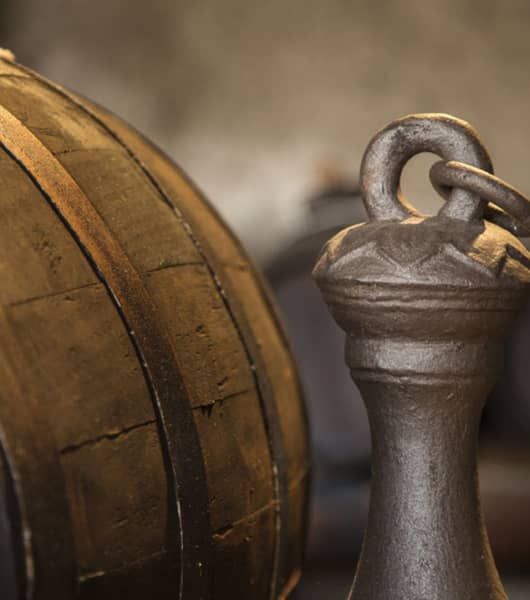

Vinegar farm
Cavazzone vinegar farm a family tradition

Occupying in an old hayloft, the vinegar farm is the place of origin of Balsamico del Cavazzone, the result of centuries-old effort, experience, patience and passion, with roots that go far back in time and are closely connected with the Reggio Emilia territory. The production of this nectar starts in barrels of the ancient vinegar farms belonging to the Terracchini and Sidoli families, still in charge of the production; these barrels so rich in fragrance and history are about 200 years old. Balsamic vinegar production has developed over the years until it reached the current 50 batteries. The product obtained is a thick dark brown translucent liquid, with a very pleasant acidity degree, a sweet and sour taste and a penetrating scent.

From harvest to barrel
The production starts with the grape harvesting, its pressing and then the cooking of what we call the ‘must’ or the product obtained from the crushing of the grapes, let to simmer until the water has evaporated and the right sugary concentration is reached. The must is then allowed to cool off and put in barrels with a wide opening, where Zygosaccharomyces yeasts are responsible for its alcoholic fermentation. It is placed in 100/200-litre durmast oak barrels called ‘badesse’ (in English, ‘abbess’), where acetic fermentation takes place thanks to the bacteria contained in it.

The acetified must is now ready to undergo the refinement and ageing cycle: it is transferred from the biggest to the smallest of the batteries of barrels. The batteries consist of 5 barrels each, with decreasing sizes from 50 to 15 litres, made of different woods: ash, mulberry, cherry, acacia, juniper and chestnut. Each of these woods gives its specific characteristic to the vinegar: chestnut is rich in tannins and gives vinegar its brown colour; cherry adds sweetness; mulberry speeds up concentration; juniper adds a singular aroma. The vinegar farm is located in an old airy and well oxygenated hayloft where the temperature range produces evaporation and sugar concentration during our hot summers and sedimentation of the suspended substances during the chilly winters of the Po Valley.

Each year a sample of product is taken from the smallest of the barrels. A maximum quantity of 1/5 of the barrel is drawn when it is ready to be bottled and this quantity is immediately replaced with vinegar from the next bigger barrel, which is closer in size. The quantity drawn from this last one is taken from the bigger one closer to its size and so on up to the biggest of the barrels. The largest barrel now has room to receive the cooked and acetified must from the badesse. The opening at the top of the barrels is then closed with a clean gauze to prevent dust or insects from falling inside. Such opening is needed for vinegar oxygenation, evaporation and movement. This procedure is repeated in the same way the following year.



